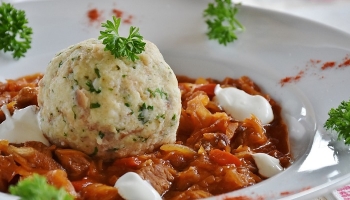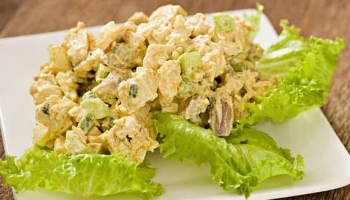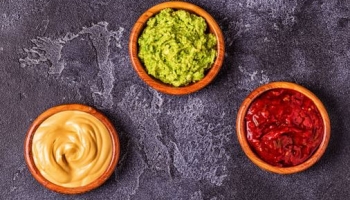An induction cooktop is incredibly handy when it comes to cooking foods that may spill over the pan like boiling pasta or frying chicken.
With the smooth top, you can clean it off after it has cooled down. Or, you can clean off the parts of the stovetop that is not the circle of burner that you are using. It is typically cooled enough on the sides to wipe down if needed. Make sure you are careful when doing this.
This easy-to-use tool is great for anyone who decides to cook, even if they are just learning. It uses the force of heat induction to cook anything necessary. However, this does work best with magnetic cookware such as “cast iron skillets, carbon steel, and magnetic stainless steel” according to the Whisk. This is because of the nature of which induction heat physically heats a pan.
It uses magnetic energy that is then transferred to the magnetic cookware, which lets it come into the pan and then transfers it to the food.

However, if you are using other types of pans, specifically ones that have a magnetic bottom, the heat does not go through the pan to the food. While those types of pans are great for gas cooktops, it does not conduct induction and therefore will not cook the food properly.
Thankfully, for the sake of today’s article, the pans that work best on an induction cooktop also work best to make the best pancakes.
While pancakes are a breakfast special, they can become tricky to make properly each time. It takes practice, to find the recipe and tools that work best for you.
- Pan that is the correct size of the burner so as not to have disproportionate heat.
- Spatula for turning
- Whisk or Rubber Spatula
- 2 mixing bowls – one for wet ingredients and one for dry ingredients.
- Correct measuring spoons and cups for all ingredients
- Your preferred form of fat (butter, oil, or cooking spray)
Let’s look at each utensil you may need to understand its purpose:
The Pan
The pan, of course, is used to cook the batter into the actual pancake. It is very important, but that does not necessarily mean you can cook a pancake properly with any pan you pull from the shelf. When making pancakes, you want to make sure the size of the pan is as wide as you want your pancake to become, if not larger. The batter will naturally spread across the pan, which is what you want.

However, if you put too much batter into the pan and it takes up all of the surfaces of the pan, and much of its depth, then you have a problem. It will not be able to cook all the way through to flip it and it wastes batter. Curtis Stone is a well-known brand for pans, they are very durable and easily available online.
Turning Spatula and Rubber Utensils
Utensils like a turning spatula, rubber spatula, or whisk are very helpful and affordable in the kitchen. The purpose of these utensils is to manipulate the food you are cooking to do an action it would not normally do. Now, each one of these utensils can be used in many different situations, but it is best to know which ones you prefer most.

A turning spatula is a must-have as its sole purpose is turning your food without burning yourself or making a mess when your attempt to flip a pancake falls right onto the stove. However, a rubber spatula and a whisk can be considered interchangeable to mix ingredients.
In other cooking situations, cooking with one over the other may make it easier, so make sure you have both. But, mixing everything in the proper amount is very important. Make sure you know which is your favorite when you have the option to use either and have it readily available.
Mixing Bowls
Mixing bowls are another staple in any kitchen and it is important to utilize different sizes of each mixing bowl appropriately. If you read your recipe, you will see that your portion of dry ingredients will be larger than your wet ingredients. Make sure you have two mixing bowls and at least one of them can either fit the number of dry ingredients in it.

Next are your measuring cups and spoons to measure each ingredient. Especially when baking, you want to never estimate your ingredients measures and just throw it in as you please. Small amounts of any ingredient can throw off an entire dessert or in this case, breakfast.
This is why most recipes specify having a butter knife or a straight edge that you can drag across the top of the measuring utensils to make sure to get the exact amount of ingredients consistently.
Lastly, you must always use some form of fat when cooking on an Induction Cooktop to keep the pan greased. This way, it will be easy to transfer cooked food onto a plate. In this case, it is extra important to make sure you can flip the pancakes as needed. Some people reapply the fat after each pancake is completely cooked. Others only apply when it is necessary. This is your choice in terms of reapplying, but making sure to apply several times when making a batch of pancakes is vital.
The Expert Tip: 1
The first tip is to make sure to allow your batter to sit before you start to cook them on the Induction cooktop. Any recipe may tell you a specific time to allow it to rest, but it is important to make sure your batter is resting before they are cooked for some time, often 10 minutes.
This is due to the gluten within the batter that naturally tightens when you mix. If you overmix or do not allow the batter to rest, the batter’s gluten will tighten and the stove’s heat solidifies the gluten’s tight bond making it tough. For light and fluffy pancakes make sure to only mix enough to incorporate all ingredients and to let it sit.
The Expert Tip: 2
The next tip is you want to make sure your stove and the pan are at the correct temperature before putting any batter in. You want to make sure your pan is hot enough to cook through a thick dough, but not too hot that it is burning the fat.
A medium or a mid-high is a good place to start. You can always adjust the temperature from there, but make sure to never turn on the heat and immediately after put in the batter of the pancake. Thank goodness you are using an induction cooktop because this will take hardly any time at all!
Once you are ready to put on the batter, take a measuring cup filled with batter and directly spoon the batter in the middle of your pan. This allows for the batter to naturally seep out across the pan and create the circular shape you hope to see in a pancake. Let it sit for a short period and check the bottom of the pancake periodically by taking your turning spatula and looking at the bottom.
For light, fluffy pancakes turn when the bottom is slightly less than golden brown. Another sign of the pancake being ready to flip is right-side up the outside edge begins to take on a different texture than the middle part of the batter. This portion could even contain some bubbles, and begin to resemble the middle part of the pancake. Simply scoop up the entire pancake with your turning spatula and flip the pancake on its batter side.
Repeat this over and over until you use all of the batter in your bowl. As you keep making pancakes on Induction Cooktop, you want to keep an eye on the outside edges of your pan. Sometimes the consistent use of the induction cooktop can make the pan heat up more than you intended.
If you are finding dark, burning spots on the sides of your pan you may want to turn down your heat and reapply some new fat. You can also tell if your burner is on too long if your pancakes are getting done quicker or are becoming more burnt as you repeat the process. This is an easy fix, though it is easy to allow it to get out of hand if you are not watching the pan carefully.
While there are many parts of this process to look out for, like I said before, it takes practice before you can get it down to make a perfect pancake on Induction Cooktop. Keep trying at it, and don’t be afraid of trying various recipes or utensils to see what suits your cooking needs.
Being inquisitive and willing to fail to get an answer is half of what cooking is really about.
There is no shame in burnt or runny pancakes. Just try again! Sooner or later you will find what works for you. Happy Cooking!
Shanny
Shanny not only has an exceptional understanding of the foodie mindset and how nutrition works, she has also achieved her Master’s Degree in Education. Outside of her academic achievements, she loves writing food blogs. It's so much more than a list of meals though! Shanny creates helpful cookware guides and delicious recipes that are easy to follow. She does all of this as a food blog writer because she loves it. That's why she spends lots of time testing out different recipes in her own home. She truly is a one-of-a-kind foodie, from her home to yours - with a story to tell, new recipes to indulge in and new tips to tantalize those tastebuds.












